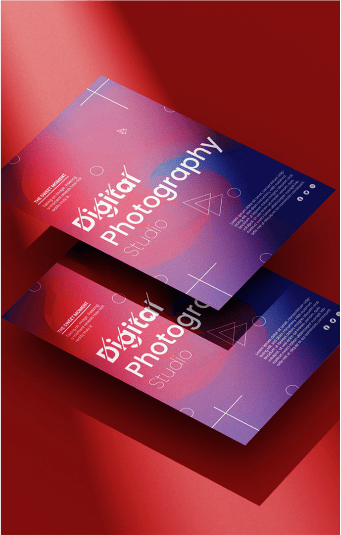Google’s logo is an iconic symbol that has come to define our modern digital age in many ways. It stands out against its competitors and its significance cannot be understated. But what lies beneath this recognizable design? What inspired the innovative creators at Google to craft such a unique, powerful, yet simplistic logo design? In this blog post, we will take an in-depth look into the elements that comprise Google’s logo design – from its color palette and typography selection to the implications of symbolism – and analyze why it remains so impactful today. Let’s begin!
History and Evolution of Google’s Logo Design
Google’s logo has seen quite a transformation since its first rendition in 1998. The design began with a colorful and playful font, which evolved to a cleaner and simpler look with the addition of a shadow effect in 1999. Over the years, Google experimented with different colors, shapes, and styles, reflecting the evolution of technology and design trends. Their logo took a significant turn in 2015 when they unveiled a new design with a sans-serif font and a brighter color scheme. The updated logo reflected the company’s evolution from a search engine to a technology giant that provides a wide range of products and services. Google’s logo design, like the company itself, has been a fascinating journey to follow.
The Original “BackRub” Logo
The original “backrub” logo may not be a household name, but it played an important role in the origins of the internet. The logo was created for a search engine called Backrub, which was founded by Larry Page and Sergey Brin in 1996. The logo itself is simple, featuring a hand with its fingers interlocked to create a stylized letter “B”. Yet, it represented the innovative approach that the young entrepreneurs behind Backrub were taking to search technology. The name Backrub actually referred to the way their algorithm analyzed the “backlinks” on web pages to determine their relevance. Although the search engine never gained mainstream popularity, it provided the foundation for what would eventually become Google – a company that needs no introduction. Taking a closer look at the original Backrub logo provides insight into the humble beginnings of one of the most dominant forces in the modern world.
Visual Components of the Current Google Logo
Google’s iconic logo has undergone quite a few transformations since its inception in 1998, with the last major redesign occurring in 2015. The new iteration of the logo features a sans-serif typeface, with the signature bright primary colors giving way to a more subdued palette. The letter ‘g’ has also been given a softer, more rounded shape, while the rest of the letters maintain their standard shape. As for the visual components, the logo’s use of negative space is a key aspect, with the white spaces between the letters helping to integrate them into a cohesive and recognizable whole. Overall, the current Google logo exudes a fresh and modern feel that embodies the company’s innovative spirit.
Colors and Fonts Used in the Google Logo
Google is known for its simple, colorful logo. Although it may seem like a simple design, a lot of thought and consideration was put into the colors and fonts used in the logo. The primary colors used are red, yellow, and blue, with a touch of green. These colors represent playfulness, creativity, and innovation- all values that align with Google’s brand. The font used is a custom version of the classic serif font called Catull, which gives the logo a sense of professionalism and sophistication. It’s interesting to think about how the colors and fonts used in the Google logo contribute to the overall image of the company that we all know and love.
Shapes, Proportions, and Spacing of Google’s Logos
Google’s logos are easily recognizable around the world, and it’s no wonder why. If you take a closer look, you’ll see that the shapes, proportions, and spacing of the letters are all carefully crafted. Everything from the rounded edges of the letters to the perfect spacing between them is intentional. It’s not just aesthetically pleasing – it’s functional too. The clarity and legibility of the letters ensure that the logo is easily understood from a distance, or when it’s shrunk down to fit on a tiny screen. It’s a true testament to the power of design and the impact it can have on a brand.
Google’s Brand Identity
A company’s logo is the face of their brand. It needs to be distinctive and memorable. Google’s logo has been through a few changes over the years, but it still remains one of the most recognizable logos out there. The bright primary colors and playful font reflect the company’s fun and innovative personality. However, the logo is more than just a visual representation of the brand. It’s a symbol of the company’s commitment to providing users with a seamless and user-friendly experience. The logo is integrated into everything Google does, from the search engine to their suite of apps. It’s a constant reminder of the brand’s mission to connect people with the information they need, when they need it.
Color Theory in Google’s Logo Design
Google’s colorful logo is one of the most recognizable and iconic designs on the internet. But what goes into the selection of colors for such a dynamic and complex company? This is where color theory comes in. From the bright blue to the playful green and red, each shade was carefully chosen to convey specific emotions and feelings. For example, blue is often associated with trust and security, as well as intelligence and stability. Meanwhile, green is used to represent growth, vitality, and nature. By understanding the principles of color theory, Google was able to create a logo that perfectly represents the brand’s fun, innovative, and trustworthy spirit.
Hidden Cues in Google’s Logo
Google’s logo is instantly recognizable. But did you know there are hidden cues cleverly incorporated into it? In the four primary colors used in the logo – blue, red, yellow, and green – many have seen a nod to the primary colors of printing. However, the colors actually represent brand values central to Google’s philosophy. Blue represents stability and trustworthiness, red represents energy and passion, yellow represents friendliness and happiness, and green represents growth and positivity. These values are reflected in every aspect of Google’s operations, and it’s fascinating to see how even their logo conveys their core beliefs. So next time you search using Google, take a moment to appreciate these cleverly hidden details!
Conclusion
All in all, Google’s logo design lays the groundwork for a cohesive and recognizable brand identity. From its humble beginnings as a Stanford University project to its current recognition as “the world’s most recognized brand,” Google has come a long way. The simplicity of the color scheme and the perfectly proportioned letters all help to solidify their visual identity. Additionally, the hidden cues lying within each element that can be traced back to their original mission statement have served as a reminder that they continue to fight for information accessibility and digital frontiersmanship even today. As one of the most influential companies in the 21st century, Google goes beyond great design by pushing boundaries in order to not only make searching easier but make it fun while doing so. This is part of what shapes their successful story from past to present – A timeless classic Renaissance story we can all learn from.





